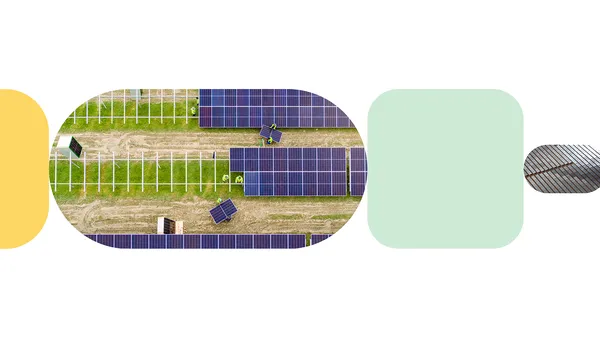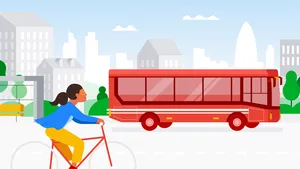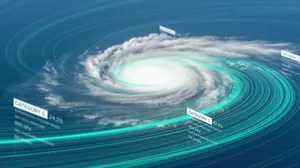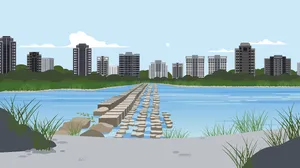Project Green Light’s work to reduce urban emissions using AI
Road transportation is responsible for a significant amount of global and urban greenhouse gas emissions. It is especially problematic at city intersections where pollution can be 29 times higher than on open roads. 1 About half of the emissions at intersections comes from traffic stopping and starting 2 , and we found that by leveraging AI we can reduce these emissions by optimizing traffic lights.
Green Light, a Google Research initiative, uses AI and Google Maps driving trends to model traffic patterns and make recommendations for optimizing the existing traffic light plans. City engineers can implement these in as little as five minutes, using existing infrastructure. By optimizing not just one intersection, but coordinating across several adjacent intersections to create waves of green lights, cities can improve traffic flow and further reduce stop-and-go emissions.
Several cities have already participated in Project Green Light — and city officials are welcome to sign up for our waiting list.
We’re excited to share that early numbers indicate a potential for up to 30% reduction in stops and up to 10% reduction in emissions at intersections. 3 Green Light is now live in 70 intersections in 12 cities from Haifa to Rio de Janeiro to Bangalore. In the intersections where Green Light is already live, this can save fuel and lower emissions for up to 30M car rides monthly.
Green Light is already live and helping to reduce emissions at intersections in 12 cities: Abu Dhabi, Bali, Bangalore, Budapest, Haifa, Hamburg, Hyderabad, Jakarta, Kolkata, Manchester, Rio de Janeiro and Seattle.

Applying AI to optimize traffic lights
For many city traffic engineers, it is hard and expensive to get access to reliable data for traffic light optimization, which means that many traffic lights rely on outdated configurations. Our city partners tell us that prior to Green Light, they would try to optimize traffic lights using expensive sensors or time-consuming manual vehicle counts — and these solutions do not provide complete information on key parameters they need.
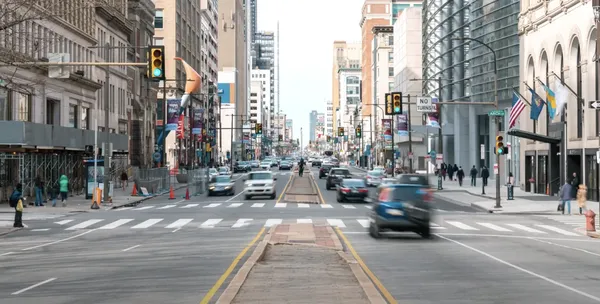
Google Research teams have been exploring the use of AI and driving trends from Google Maps to model intersections and traffic flow. We build an AI-based model of each intersection, including its structure, traffic patterns (such as patterns of starting and stopping), light scheduling, and how traffic and the light schedules interact, and then we also build a model of the interaction between traffic lights. Based on this model, we develop AI-based optimizations and then provide recommendations to city engineers via the Green Light interface. As an example, we might identify an opportunity to coordinate between intersections that are not yet synced and provide a recommendation around the timing of the traffic lights so that traffic flows more effectively along a stretch of road.
Green Light is capable of analyzing thousands of intersections simultaneously, improving the flow through multiple intersections in the city. Our AI-based recommendations work with existing infrastructure and traffic systems, and city engineers are able to monitor the impact and see results within weeks.
"Green Light identified opportunities where we previously had no visibility and directed engineers to where there were potential benefits in changing signal timings. This provided valuable insights for our city with 2,400 traffic signals. Both the Green Light and Transport for Greater Manchester teams brought expertise and ideas to the table to improve journeys and reduce emissions." David Atkin, Transport for Greater Manchester

By working with cities globally, we can help both people and the planet. Our technology has shown success in cities like Seattle and Hamburg — and the potential for impact is even more significant in cities with less access to advanced technology. We are working closely with our partner cities to scale to more intersections within each city, and we aim to expand to more locations next year, so that across the world, people can experience cleaner, greener cities.
If you are a city representative or traffic engineer, please go here to learn more about Project Green Light and join our waiting list.
